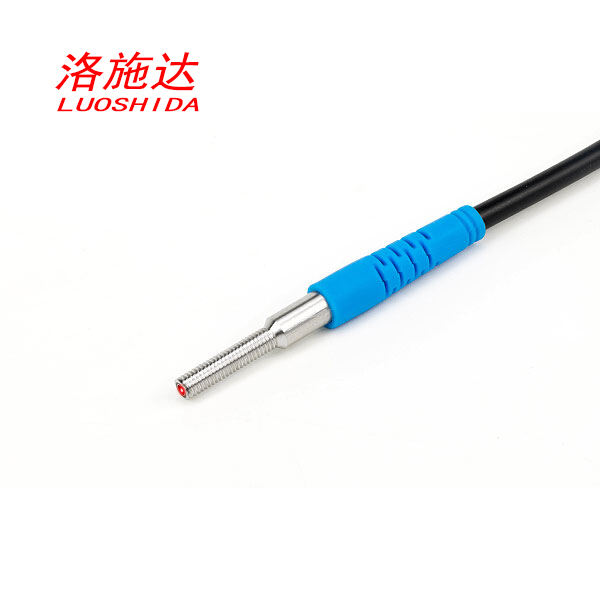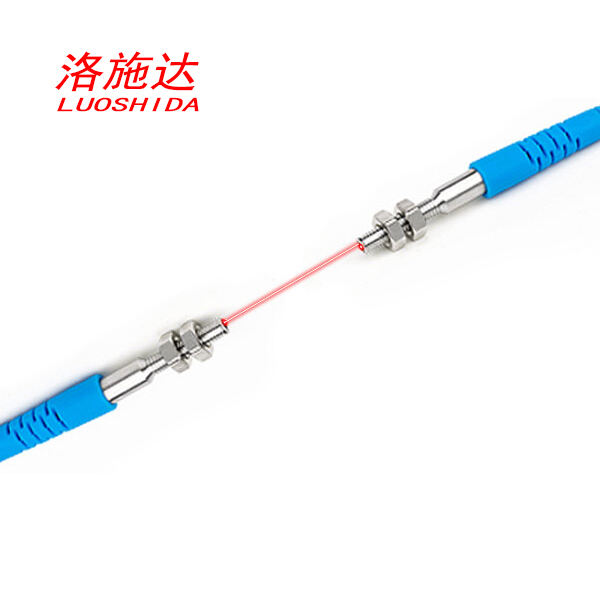Automate your manufacturing processes easily with laser sensors for high - speed object detection.
What Are Laser Sensors for Manufacturing Automation?
Laser sensors used in manufacturing automation work as highly precise tools that can spot, measure, and track objects during production runs. These gadgets make use of sophisticated laser tech to provide consistent readings that manufacturers rely on when fine tuning their operations. We see them all over places like car factories, electronic assembly lines, and even in pharmaceutical plants where they help ensure products meet strict standards. What makes these sensors stand out is how well they handle both quality checks and streamlining production steps at the same time. Many factories now consider laser sensors essential equipment for keeping up with today's demands for faster, more accurate manufacturing.
Applications of Laser Sensors in Manufacturing Automation
Real-Time Quality Control
Laser sensors play a key role in maintaining product quality since they can spot defects or irregularities as things happen on the production line. These devices show up all over different manufacturing settings for jobs like checking surfaces, measuring how thick materials are, and verifying dimensions. Take the auto sector for example where manufacturers rely heavily on these sensors to check if engine components fit properly after machining. The whole point is making sure every part matches those tight specs required for safety and performance. When companies integrate both laser distance sensors along with photoelectric ones into their operations, they end up cutting down on mistakes during production runs while also reducing material waste. This helps factories run smoother overall without compromising on quality standards.
Precision Positioning and Measurement
Laser sensors offer amazing accuracy when it comes to positioning and taking measurements something that matters a lot for things like aligning robotic arms properly. We find these sensors all over assembly lines and material handling setups where getting exact measurements just isn't optional anymore. Take infrared laser distance sensors for instance they can clock distances down to the micron level, which explains why so many factories rely on them day in and day out. The real value here goes beyond just numbers. When manufacturing systems run with this kind of pinpoint accuracy, they simply work better, make fewer mistakes, and ultimately save companies money while keeping production running smoothly through what can be pretty complex operations.
Automated Inspection Systems
Adding laser sensors to automated inspection systems makes sure products stick to industry standards because they spot defects, check measurements, and find surface flaws that might otherwise go unnoticed. Take the electronics sector as an example where these sensors scan printed circuit boards (PCBs) while they're being made, catching issues before they become bigger problems. When manufacturers install photoelectric switches along with various types of laser tech in their inspection lines, what happens is pretty straightforward quality control improvements. Products coming off the line just tend to be better made overall. What's great about this setup is twofold actually. First, it boosts reliability across the board. Second, it cuts down on time spent doing manual inspections which means faster turnaround times for finished goods without compromising on quality standards.
DC M3 Ultra-Mini Laser Sensors for Automation
DC M3 Ultra-Mini Laser Sensor Diffuse Mode
The DC M3 Ultra Mini Laser Sensor works great in diffuse mode for automation needs where space matters but performance can't suffer. What makes this little guy stand out? It handles all sorts of surfaces without breaking a sweat whether something's dark colored, shiny, rough or smooth. That's why so many folks in packaging lines and warehouses rely on it day after day. When it comes to spotting items or keeping track of counts, the sensor does pretty well because it reads how light reflects differently from various materials. Being a photoelectric device means factories get better results faster while saving money on errors and downtime. Pretty much every plant manager I've talked to mentions these sensors when discussing ways to boost productivity without blowing the budget.

DC M3 Ultra-Mini Laser Sensor Through Beam Mode
When dealing with automated systems that need exact placement and alignment of parts - especially those requiring both precision and long range detection - the DC M3 Ultra-Mini Laser Sensor really shines when used in through beam mode. The sensor works particularly well in automotive assembly lines and electronic component manufacturing where positioning components correctly and verifying parts are standard daily operations. What makes this device so valuable across various industries is its ability to deliver consistent results while maintaining efficiency levels that manufacturers demand from their production processes.

By leveraging these DC M3 Ultra-Mini Laser Sensors, manufacturers can enhance automation capabilities, thereby optimizing their production processes for increased efficiency and reduced operational costs.
Choosing the Right Laser Sensor for Your Automation Needs
Factors to Consider When Selecting a Laser Sensor
When picking out a laser sensor for automation work, there are several important things to look at so it works well for what needs doing. The main specs worth checking include how far it can detect objects, how accurate those readings are, and how fast it responds when something changes. Most modern laser sensors actually handle these aspects pretty well overall. Don't forget about where the sensor will be installed either. Things like extreme temperatures, dampness levels, and whether there might be dust floating around or machines shaking nearby really matter because they can mess with both how well the sensor performs day to day and how long it lasts before needing replacement. And finally, make sure whatever sensor gets chosen plays nicely with all the other equipment already running in the system, especially if there are photoelectric switches involved somewhere too. Getting this right means everything runs smoothly without constant headaches down the road.
Integration with Existing Systems
When a laser sensor gets properly integrated into current production systems, it generally boosts operational efficiency while cutting down on those frustrating downtimes. The sensor needs to talk well with PLCs, robotic arms, and various control systems for everything to work smoothly together. A good practice is to check if it works with standard industrial protocols like Modbus, Ethernet/IP, or Profinet before installation. Getting this compatibility right makes all the difference when trying to get maximum value from advanced technologies such as laser distance sensors. This kind of setup ultimately leads to better performance across automated manufacturing environments without unnecessary complications.
Future Trends in Laser Sensor Technology for Manufacturing
AI and Machine Learning Integration
Bringing together AI and machine learning with laser sensors is changing how manufacturing works in big ways. The tech helps with things like figuring out when machines need fixing, spotting defects early, and making processes run smoother overall. Take AI laser sensors for example these days they actually spot problems before they occur which cuts down on unexpected breakdowns. When companies know ahead of time that something might go wrong, they can fix it during planned maintenance instead of dealing with emergency repairs. This makes all the difference in factories where production lines just cannot afford to stop running. For automotive plants or food processing facilities that need their equipment working nonstop, this kind of smart monitoring system has become essential rather than optional.
Enhanced Connectivity with IoT
The rise of IoT connectivity represents one of the hottest trends currently shaping laser sensor tech these days. With real time data sharing and remote monitoring capabilities now possible, factories are getting unprecedented visibility into their operations. Manufacturers can keep tabs on production numbers, iron out workflow bottlenecks, and base their choices on solid data rather than guesswork. Take it from experience - when laser sensors get hooked up to IoT systems, they start delivering valuable information about how machines perform at different locations. This leads directly to better reliability rates and improved efficiency overall. The real game changer comes when companies start tweaking production runs on the fly as market demands shift around. Smart resource management becomes possible, which ultimately creates those so-called smart factories everyone keeps talking about in industry circles.

 EN
EN
 AR
AR
 FR
FR
 DE
DE
 IT
IT
 JA
JA
 KO
KO
 PT
PT
 RU
RU
 ES
ES
